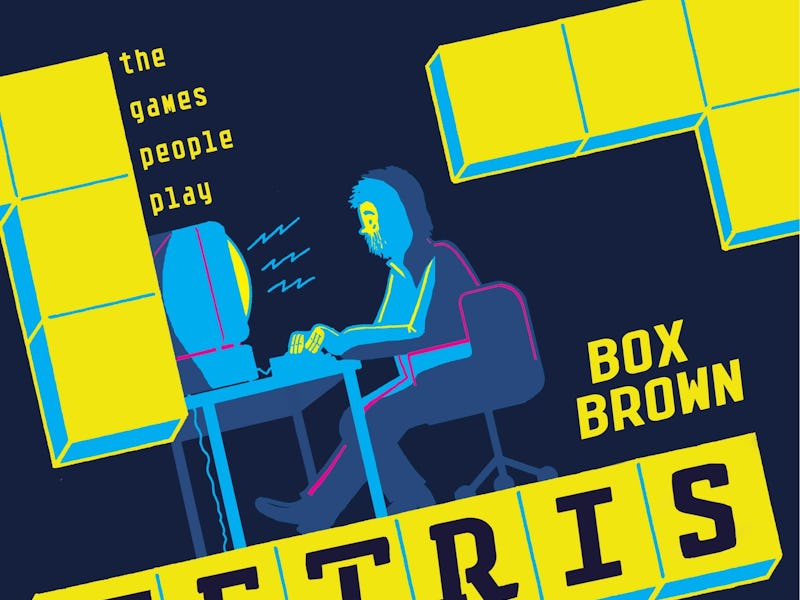We Had to Level Up Before We Could Look Back on 'Tetris'
“These stories now can be told [because now] people understand,” says Box Brown, author of 'Tetris: The Games People Play.'

One of the most successful games ever is Tetris. In Tetris: The Games People Play, a new graphic novel from Ignatz Award-winner Box Brown, the origins of Alexei Pajitnov’s ingenious yet simple creation are recounted to thunderous impact over three decades.
Although heavy with comix aesthetics, Brown’s Tetris is part of a new sub-genre of dramas that evaluate the recent past and human beings’ growing pains with tech. The book is cut from the cloths of The Social Network and Halt and Catch Fire, and to Brown, that’s not an accident.
“These stories can now be told because people understand,” Brown told Inverse. “People have a better understanding of not just games, but technology and computers. You can tell those stories and people get them.”
Before the book’s retail release, Brown spoke about the making of Tetris: The Games People Play, comic book that chronicles man’s understanding of play and the work that goes into it.
Besides being your preferred style, is there any reason why you pursued comix-style art for a book about Tetris?
I never considered that because I can only make comics one way. I know there’s a lot of illustrators that consider style. I can only do what I do. One of the challenges with the book definitely was taking large, convoluted information and figuring out ways to tell them.
The story alone is a head-spinner. There are so many characters involved besides Alexei, his colleagues, and his publishers. How did you keep track of them?
It was definitely difficult [and] something I struggled with. When I first started the book, I made a big “family tree” of all these characters and how they were related in terms of business dealings. I had to keep going back and forth to remember who they were, who they worked for, all the stuff.
For a comic with a fun art style, Tetris gets dark. What was it like balancing serious events with an admittedly cartoon-like design?
You can’t turn away from difficult truths. These complications made the story interesting. It portrayed some of the consequences that can happen when art gets into the hands of a capitalist society. It can injure the artist in ways just making the work and maybe having people view it or play it [doesn’t]. Capitalism inserts something else into the artist’s life for sure.
That was one of the things I found fascinating. When Pajitnov created Tetris, he did it not to make money. He was from communist Russia. If he tried to sell it, he could have gone to jail. That was not even in his understanding. He was [just], “Make it.” In a way, it was like a pure breeding ground for art because it takes away — not that they encouraged — the capitalist pressure.
You use yellow almost all throughout the book. Why is that color so prominent?
It was going to be black and white. I was using yellow as a stand-in with gray, but the more I used it the more I liked it. For different reasons, you can use yellow as a shade-in, but you can also put text on top of it and people could still read it. That I liked. The other thing I liked is that it “shined” off the page, glowed in the way games glow. That’s what I was going for. When we were working on the cover, I wanted neon colors so it jumps out the way a game does.
Of all the stories you heard, which one stood out the most?
I spoke to Gilman Louie, who was part of the development. It’s in the book, when they first started to try to market Tetris, a lot of companies turned it down. Not because they didn’t like the game. It’s because they didn’t know how to sell it.
Games were, back then, very much a toy for boys. They sell it to them specifically, and they didn’t want it. That’s part of the book, that these are things imposed upon the game by capitalism. To sell and market this thing, they added scenes from Russian history, as this secret, “scary” thing from behind the iron curtain. It’s just a puzzle game, but it’s the evil version of checkers from Russia, our enemies. It’s an interesting look at the way you have to sell these experiences as something they’re not quite.
Tetris: The Games People Play is available now.